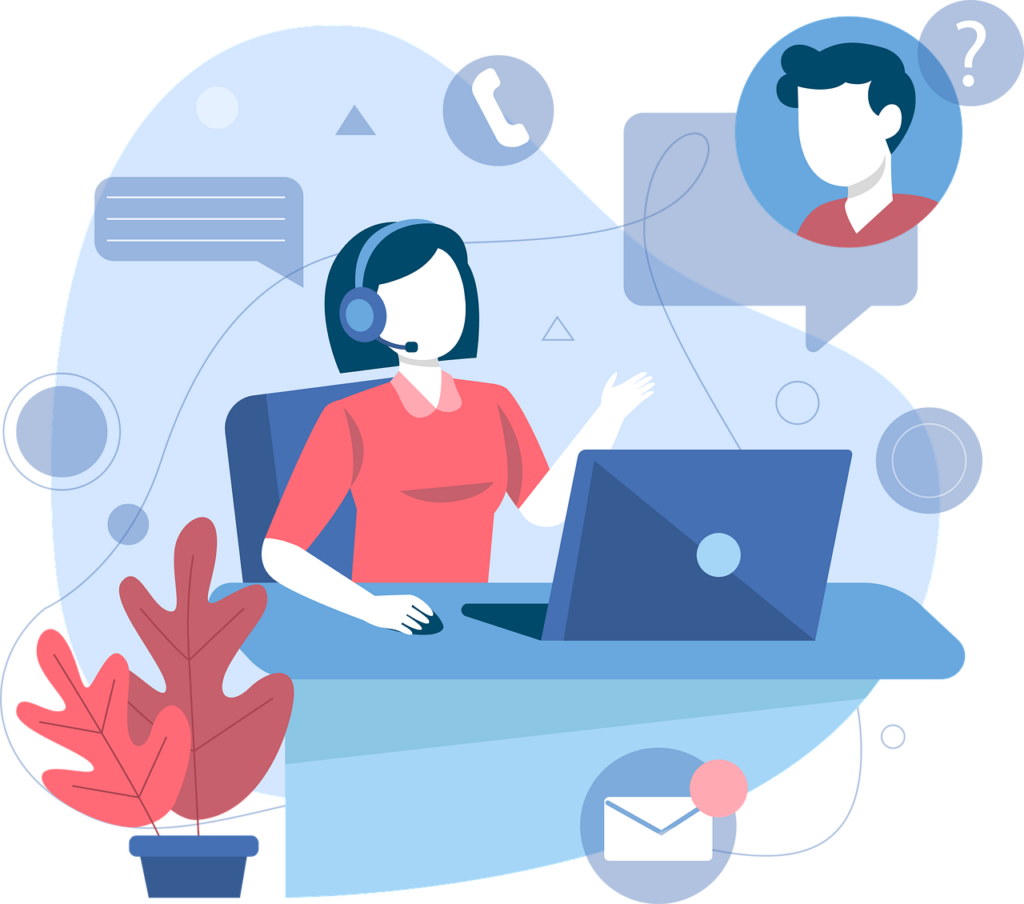Customer service is at the heart of any successful business. Customer expectations continue to evolve. Companies must evolve strategies and tools used to meet those expectations.
55% of customers like self-serve customer service over speaking to a representative.
Technology has become a game-changer in this regard. It offers innovative solutions that improve efficiency, personalization, and satisfaction. So, what kinds of technology can boost your customer experience? Below, we’ll explore several options transforming customer service today as well as explain how they can help your company stay competitive.
1. Artificial Intelligence (AI) and Machine Learning
AI and Machine Learning are leading the charge in revolutionizing customer service. These technologies are enhancing everything from customer interactions to backend processes. They’re making service more efficient and personalized.
- AI-Powered Chatbots: Chatbots have become a staple in customer service. AI-powered chatbots can understand and respond to natural language. They make interactions feel more human-like. They can also handle a wide range of tasks.
- Predictive Analytics: Machine Learning enables businesses to predict customer behavior and needs. ML algorithms can forecast future issues, preferences, or inquiries. This allows companies to proactively address customer needs.
- AI-Driven Personalization: AI helps businesses offer personalized experiences at scale. By analyzing customer data, AI can tailor recommendations and communications. This level of personalization increases conversion rates and customer retention.
2. Omnichannel Support
Customers today expect seamless support across several channels. This includes email, social media, phone, and in-person interactions. Omnichannel support ensures a consistent experience, regardless of the channel a customer chooses.
- Unified Customer Profiles: A benefit of omnichannel support is maintaining unified customer profiles. All interactions get recorded in a central database. This provides a complete view of the customer’s history. It enables more informed and personalized help.
- Consistent Experience Across Channels: Omnichannel support ensures a consistent experience. This is regardless of contact method. This consistency is crucial for building trust and satisfaction. It also allows customers to switch between channels easily, enhancing their experience.
- Real-Time Channel Switching: Advanced omnichannel systems allow real-time switching between channels. A customer might start an inquiry on social media. Then easily continue it over chat. This flexibility improves satisfaction and efficiency.
3. Cloud-Based Customer Service Platforms
Cloud-based customer service platforms are another technology transforming the customer service landscape. They offer flexibility, scalability, and accessibility. In ways that traditional on-premise systems cannot match.
- Scalability and Flexibility: Cloud-based platforms allow businesses to scale their customer service. This is particularly useful for companies that experience seasonal fluctuations in inquiries. Cloud systems make it easy to add or remove agents as well as adjust resources without significant investments.
- Remote Access and Collaboration: The cloud enables remote access. This allows customer service teams to work from anywhere. Cloud-based platforms also facilitate collaboration. They allow several agents to work on the same customer case in real time.
- Integration with Other Tools: Cloud-based customer service platforms can integrate with other tools. This integration ensures that all customer data is centralized. That makes it easier to manage and analyze. It also allows for more seamless workflows.
4. Self-Service Technologies
Self-service technologies empower customers to find answers and resolve issues on their own. All without the need to contact a customer service agent. This improves customer satisfaction. It also reduces the workload on service teams.
- Knowledge Bases and FAQs: Online knowledge bases and FAQs are common self-service tools. They provide customers with easy access to information and solutions. A well-maintained knowledge base can significantly reduce the number of support inquiries
- Interactive Voice Response (IVR) Systems: IVR systems allow customers to navigate a menu of options. They can often resolve their issues using their phone’s keypad or voice commands. Modern IVR systems are becoming increasingly sophisticated. They allow customers to check account balances, schedule appointments, and more.
- Customer Portals: Customer portals enable customers to manage their accounts and access support resources and interact with your company. They enable 24/7 self-service management of many account tasks.
5. Data Analytics and Customer Insights
Data analytics is another powerful tool transforming customer service. By analyzing customer data, businesses can gain valuable insights. These insights include behavior, preferences, and needs. This enables companies to provide more targeted and effective service.
- Customer Sentiment Analysis: Sentiment analysis uses AI to analyze customer feedback. Such as reviews, surveys, and social media posts. This allows businesses to identify areas of concern as well as respond to issues before they escalate.
- Customer Journey Mapping: Data analytics allows businesses to map out the customer journey. It helps in identifying key touchpoints and potential pain points. Using this, businesses can improve customer experience and reduce friction.
- Predictive Customer Support: Companies can use predictive analytics to anticipate customer needs. By analyzing historical data, businesses can identify patterns. They can find trends to show when a customer is likely to need support. This allows companies to offer proactive help.
6. Robotic Process Automation (RPA)
Robotic Process Automation (RPA) is another technology making waves in customer service. RPA involves the use of software robots to automate repetitive, rule-based tasks. This frees up human agents to focus on more complex and value-added activities.
- Automating Routine Tasks: RPA can automate routine tasks. Such as data entry, updating customer records, or processing refunds. This speeds up these processes. It also reduces errors. This leads to faster and more reliable service.
- Enhancing Customer Interactions: RPA can enhance customer interactions. It provides agents with real-time information and recommendations. This allows agents to provide more personalized and informed help.
- Reducing Response Times: RPA can significantly reduce response times. Customers can receive quicker resolutions to their issues. This leads to higher satisfaction and loyalty.
Let Us Help You with a Technology Roadmap
The technologies transforming customer service today offer many benefits. But it’s not always easy to know where or how to get started. Our team of IT consultants can help you build a tech roadmap that makes sense. Both for your business goals and budget.
Reach out today to schedule a chat.
—
This Article has been Republished with Permission from The Technology Press.




